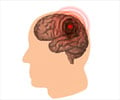According to a new research, stroke victims can improve their health and mobility by exercising on the treadmill. This has shown to yield benefits even years after the actual stroke as it implements changes that reflect actual "rewiring" of their brains.
"This is great news for stroke survivors because results clearly demonstrate that long-term stroke damage is not immutable and that with exercise it's never too late for the brain and body to recover," says Daniel Hanley, M.D., professor of neurology at the Johns Hopkins University School of Medicine.The study's results, published in Stroke: Journal of the American Heart Association, suggest that patients' brains may retain the capacity to rewire through a treadmill exercise program months or years after conventional physical therapy has ended.
The research was conducted by scientists at Johns Hopkins, the University of Maryland, and the Department of Veterans Affairs Maryland VA Medical Center at their Geriatric Research, Education, and Clinical Center (GRECC). Researchers at the GRECC, led by Richard F. Macko, M.D., and Andrew P. Goldberg, M.D., have developed treadmill therapy for stroke patients over the past decade.
Investigators at all three institutions combined efforts to recruit 71 patients who had a stroke at least six months earlier, with an average time lapse of nearly four years. At the study's onset, half of the subjects could walk without assistance, while the rest used a cane, a walker or a wheelchair.
All of the subjects, separated into two random groups regardless of disability, were tested for mobility and aerobic capacity (also known as VO2 peak), a measure of cardiac fitness.
Thirty-two patients drawn equally from both groups underwent functional magnetic resonance imaging (fMRI) to assess brain activity linked to moving their legs in a walking motion.
Advertisement
Physical therapists assigned to each subject increased the intensity of the workouts over time by increasing the treadmills' speed and incline, though the workouts never taxed the patients beyond a moderate level of 60 percent VO2 peak.
Advertisement
After six months, patients were again tested for walking speed and VO2 peak, and the same group who had undergone fMRI was rescanned. Walking speed for the treadmill group increased 51 percent compared to about 11 percent faster for those in the stretching group.
Ground walking speed among the treadmill exercisers increased 19 percent, compared to about 8 percent for the stretchers. The treadmill exercisers also were significantly more fit at study completion, with VO2 peak increasing by about 18 percent. VO2 peak decreased slightly in the stretching group.
Hoping to find evidence that improved brain activity was responsible for the results, the investigators analyzed the brain scans and found markedly increased metabolic activity in brainstem areas associated with walking among all the treadmill exercisers.
Source-ANI
TAN/L















